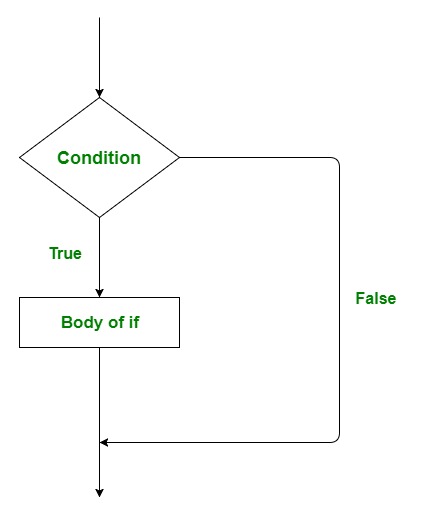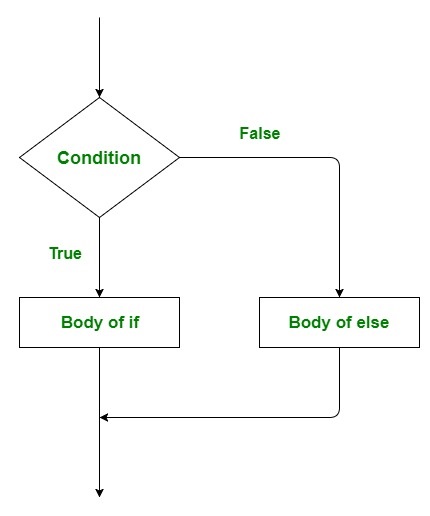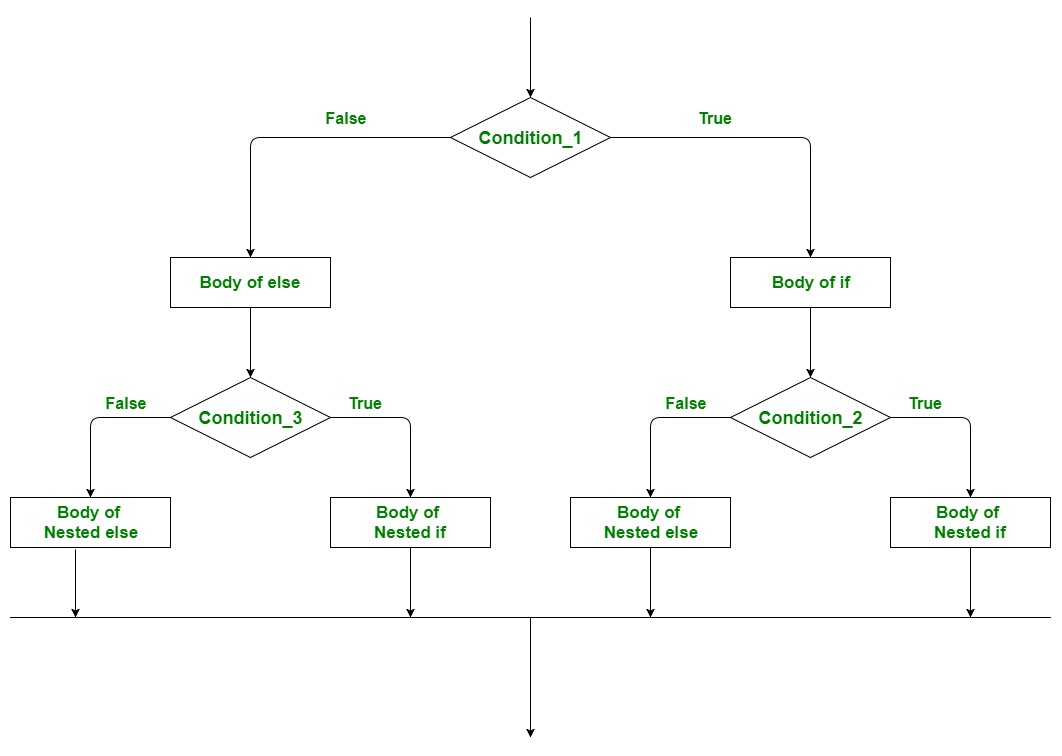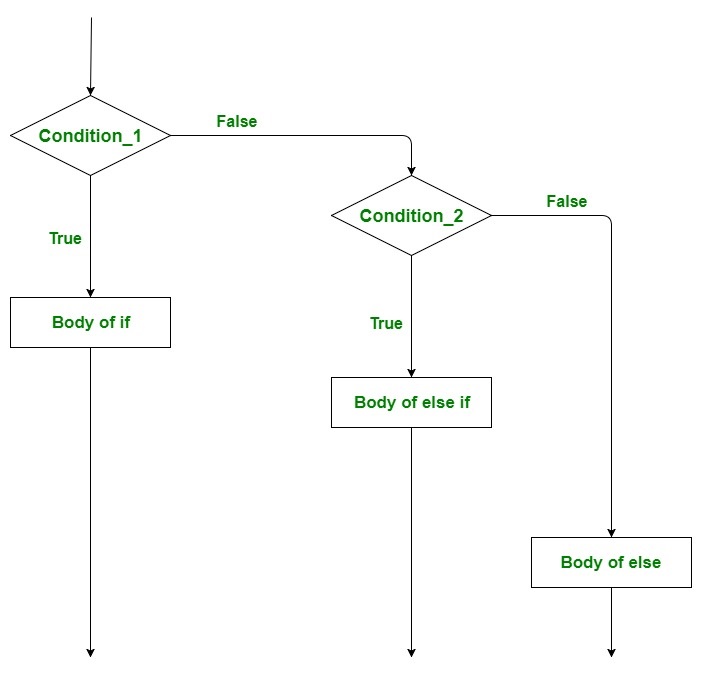编程中的决策类似于现实生活中的决策。在决策中, 当满足给定条件时执行一段代码。有时这些也称为控制流语句。斯卡拉使用控制语句根据某些条件控制程序的执行流程。这些用于根据程序状态的更改使执行流程前进并分支。
- if
- if-else
- 嵌套if-else
- if-else, if梯子
if语句
"if陈述是所有决策陈述中最简单的决策陈述。在此语句中, 仅当给定条件为true时才执行代码块, 如果条件为false则该代码块将不执行。
语法如下:
if(condition)
{
// Code to be executed
}这里,
健康)状况
评估后将为真或为假。 if语句接受布尔值–如果该值为true, 则它将执行其下的语句块。
如果我们未在之后提供大括号" {"和"}"
如果(条件)
然后默认情况下, if语句将立即的一个语句视为在其块内。
例子:
if(condition)
statement1;
statement2;
// Here if the condition is true, if block
// will consider only statement1 to be inside
// its block.流程图:

例子:
// Scala program to illustrate the if statement
object Test {
// Main Method
def main(args : Array[String]) {
// taking a variable
var a : Int = 50
if (a > 30 )
{
// This statement will execute as a > 30
println( "lsbin" )
}
}
}输出如下:
lsbinif-else语句
仅if语句就告诉我们, 如果条件为true, 则将执行语句块;如果条件为false, 则不会。但是如果条件为假, 我们想做其他事情怎么办。这是else语句。当条件为false时, 可以将else语句与if语句一起使用以执行代码块。
语法如下:
if (condition)
{
// Executes this block if
// condition is true
}
else
{
// Executes this block if
// condition is false
}流程图:

例子:
// Scala program to illustrate the if-else statement
object Test {
// Main Method
def main(args : Array[String]) {
// taking a variable
var a : Int = 650
if (a > 698 )
{
// This statement will not
// execute as a > 698 is false
println( "lsbin" )
}
else
{
// This statement will execute
println( "Sudo Placement" )
}
}
}输出如下:
Sudo Placement嵌套if-else语句
一种如果嵌套是一个如果声明那是另一个目标如果别的声明。巢状如果别的陈述意味着如果别的if语句中或else语句中的语句。 Scala允许我们嵌套如果别的内的陈述如果别的声明。
语法如下:
// Executes when condition_1 is true
if (condition_1)
{
if (condition_2)
{
// Executes when condition_2 is true
}
else
{
// Executes when condition_2 is false
}
}
// Executes when condition_1 is false
else
{
if (condition_3)
{
// Executes when condition_3 is true
}
else
{
// Executes when condition_3 is false
}
}流程图:

例子:
// Scala program to illustrate
// the nested if-else statement
object Test {
// Main Method
def main(args : Array[String]) {
// taking three variables
var a : Int = 70
var b : Int = 40
var c : Int = 100
// condition_1
if (a > b)
{
// condition_2
if (a > c)
{
println( "a is largest" );
}
else
{
println( "c is largest" )
}
}
else
{
// condition_3
if (b > c)
{
println( "b is largest" )
}
else
{
println( "c is largest" )
}
}
}
}输出如下:
c is largest如果梯子
在这里, 用户可以在多个选项中进行选择。的if语句从上至下执行。一旦控制条件之一if是真的, 与此相关的陈述if执行, 梯形图的其余部分被绕过。如果所有条件都不成立, 则最终其他语句将被执行。
语法如下:
if(condition_1)
{
// this block will execute
// when condition_1 is true
}
else if(condition_2)
{
// this block will execute
// when condition2 is true
}
.
.
.
else
{
// this block will execute when none
// of the condition is true
}流程图:

例子:
// Scala program to illustrate
// the if-else-if ladder
object Test {
// Main Method
def main(args : Array[String]) {
// Taking a variable
var value : Int = 50
if (value == 20 )
{
// print "value is 20" when
// above condition is true
println( "Value is 20" )
}
else if (value == 25 )
{
// print "value is 25" when
// above condition is true
println( "Value is 25" )
}
else if (value == 40 )
{
// print "value is 40" when
// above condition is true
println( "Value is 40" )
}
else
{
// print "No Match Found"
// when all condition is false
println( "No Match Found" )
}
}
}输出如下:
No Match Found
